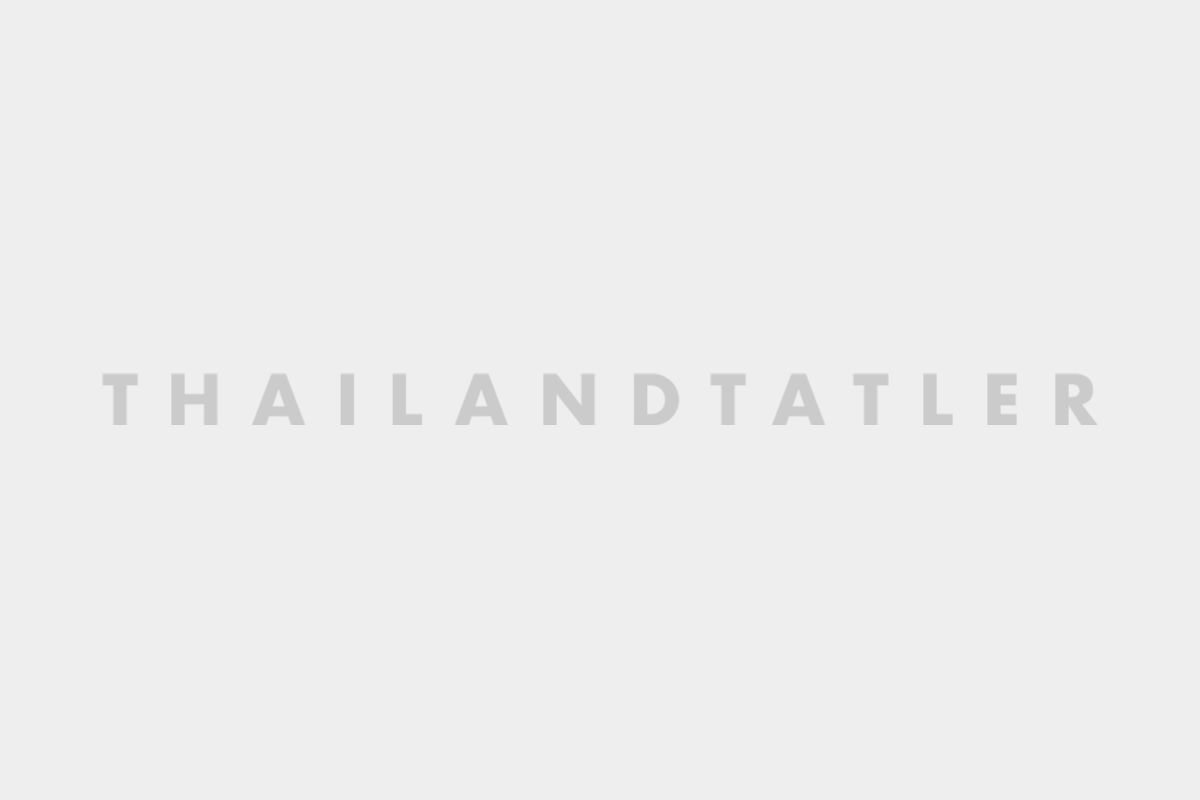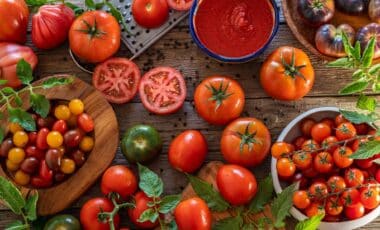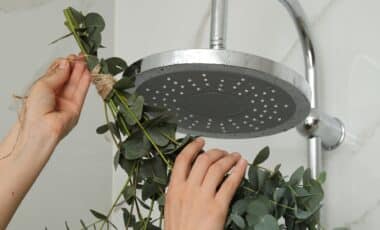
Members of the Bangkok Art Biennale curatorial team: Prof Patrick D Flores, Luckana Kunavichayanont, Prof Dr Apinan Poshyananda, Dr Adele Tan, Asst Prof Sansern Milindasuta and Asst Prof Wutigorn Kongka
Bangkok Art Biennale & Bangkok Biennial 2018
Taking place at various locations across the city, the Bangkok Art Biennale (BAB) 2018, the first project of its scale in the Thai capital, runs from October 19, 2018 to February 3, 2019, featuring the work of 75 Thai and international artists. Focusing on contemporary art from Asia, Europe and the Pacific, the biennale will be presented under the theme of Beyond Bliss, a conceptual framework that explores notions of ideal happiness and offers reflections on current global affairs.
According to chief executive and artistic director Prof Dr Apinan Poshyananda, the origins of the Bangkok Art Biennale can be traced back to 2010 when he put together a similar project under the name Bangkok Bananas. “There was turmoil in Bangkok back then and we were making a statement—that despite the chaos and turbulence, art and creativity were not enclosed and restricted. We asked artists, performers, filmmakers and creative-thinkers to come out and do live performances and installations at venues ranging from the Bangkok Art and Culture Centre to commercial areas such as Siam Paragon. The activities stretched along the main road from Pathumwan right down to Central World.”
The juxtaposition of civil strife and its suppression against creativity was clear. “It was a very lively event that took place over three weeks. There were the sounds of rioting and gunfire nearby. So in that way, the idea was that Bangkok was crazy—bananas—but at the same time, the artists’ creativity was endless and a form of sanity.”
There has been talk for a number of years about making Bangkok a destination for art as well as tourism and the question of why Thailand doesn’t have a biennale has been asked often. “There have been a few plans before but they didn’t work out. In 2015 I was approached by some people and asked if I could put together a non-government, non-profit art activity. It meant that if we wanted to do something like the Bangkok Art Biennale we would need a foundation. Hence we established the BAB foundation in 2017 as a non-profit/non-government organisation.”
Within the current political climate, the theme Beyond Bliss seeks to peel the layers and different scales of bliss and happiness. While some may perceive and seek happiness through peace, democracy and human rights, others are content with the small things in life such as being with loved ones and having good health. Hence the various and diverse interpretations of bliss became the prompt for the project’s conceptual framework, where the central question raised is what happiness truly means. “The theme of Beyond Bliss is a very open working concept. Many people thought it would focus on happiness and the good life, but in fact we want the artists to interpret and reinterpret what bliss is and what it means to them. This raises the question of how one can pursue and achieve bliss in this world of chaos and turbulence. So in the work of these artists there will be sorrow, trauma and reflections on social malaises. In a sense it is not just a commentary of the events and activities in Bangkok but of things going on all over the world,” Dr Apinan explains.
Those who keep up with the art world will be excited by the lineup of artists selected to exhibit at the Bangkok Art Biennale 2018. They were selected in part by an equally impressive curatorial team and board of international advisors. Lead by Dr Apinan, the curatorial team of five includes former director of Bangkok Art and Culture Centre (BACC) Luckana Kunavichayanont, Prof Patrick D Flores of the University of the Philippines, curator of the National Gallery Singapore Dr Adele Tan and Asst Prof Sansern Milindasuta of Bangkok University. Members of the board of international advisors include Dr Alexandra Munroe, senior curator of the Solomon R Guggenheim Museum and Foundation, Nanjo Fumio, director of Mori Art Museum, Nigel Hurst of Saatchi Gallery, David Stuart Elliott, Dr Eugene Tan, Rirkrit Tiravanija and Sunjung Kim. “We very much work as a team, asking and giving advice. We worked on the artist selection process for over a year before finalising the 75 who will show. The lineup was announced last April at the Art Basel Hong Kong exhibition.”
So how were the artists selected? Dr Apinan’s years of experience proved to be valuable in the process. “First of all you have to approach the artists yourself. Luckily, I know many of them and have worked with them before. When I approached them, I would listen to their reactions to the theme and discuss how they might go about it before coming back and thinking about the process. All of the other curators also did the same thing when going out and selecting their artists. Then we had several meetings to discuss the candidate artists followed by the process of sifting through the many sub-themes of Beyond Bliss and how we could categorise them. There were a lot of discussions and debates on whether this or that artist should be selected or not, how intense was their work and how suitable they are to the sub-themes. It’s been an enjoyable journey and the team has been very creative and diligent in terms of their research and contributions,” he says.
(Relevant: Bangkok Art Biennale 2018 Announces Participating Artists)
With biennales often being associated with both art and architecture, Dr Apinan explains how the two overlap in this project. “ASA [the Association of Siamese Architects] approached us and they actually designed some of the pavilions, which they call Beyond Tummada, which translates as ‘beyond the ordinary’ and is a play on the phrase Beyond Bliss. They invited us to do some presentations and videos during the recent ASA Expo. In fact, we will be using three or four of their pavilions. In that way, the overlap between art and architecture is there, and we treat these pavilions as artworks themselves, so putting installations inside shows that art and architecture do overlap and merge. In this day and age, everything overlaps and is inter-related. We’ll also have dance, poetry and film. We don’t intend for the Bangkok Art Biennale to simply be about visual art, and the 75 artists are like a collective of creativity.”
When it comes to art, the question of censorship is never far away but Dr Apinan is keen to stress that, “the works presented in the BAB are not censored at all. I think today we are very concerned about censorship and self-censorship. There is a lot of self-censorship going on, and as we’ve learnt from the past, art can be political on many different levels. Political art has been around for a long time, but it’s becoming more and more apparent in Thailand as a reaction to the government’s restrictions on the freedom of expression. I think it’s very normal, though the work produced against the government is very mild and covert, which is what I call self-censorship.”
The experience of pulling BAB together has been enjoyable for Dr Apinan. “It has been good. I’ve had more challenging projects but this one has been fun and I think it’s been very smooth. I was expecting to have more obstacles in terms of the venues, permission and the artists’ demands. But it’s been very nice. We started this not wanting to be overly ambitious but it has grown. We try to work consistently with the artists and we try to explain through emails and meeting with them in person. There were some constraints in the project and we made sure to identify them right from the beginning. If you know certain contexts or environments will be difficult for the artist to work in, you want to remove that pressure because otherwise the artist might pull out or abandon the project, and that’s very sad. We want BAB to be an enjoyable festival of art for all involved—the creators and the art-loving public—because we hope this is the start of something big.”

An installation of winding staircases by artist Kitsum Cheng, awho will be participating in the Bangkok Biennial 2018
 New Territories, of the works that will be exhibited at the Bangkok Biennial 2018
New Territories, of the works that will be exhibited at the Bangkok Biennial 2018
 MR Deng FU Queen will show his work at the DEE ELITE Pavillion during the Bangkok Biennial 2018
MR Deng FU Queen will show his work at the DEE ELITE Pavillion during the Bangkok Biennial 2018
BAB may have big goals but it isn’t the only inaugural art event of its kind being staged in the capital this year. Set up to challenge the “authority of institutionalised access to representation in art and curatorial practices” is the Bangkok Biennial. Although on a much smaller scale to BAB, it is an open-access event offering an open-source platform that follows a model of inclusivity, as opposed to the traditional top-down structure of art economics. In an effort to decentralise the organisational structure, there are neither central curators nor dispersion of resources for the Bangkok Biennial. Following the bi-annual structure, the first edition runs from this month to September 30, 2018 mainly in the Charoenkrung area, which is known as a creative hub.
The organisation team, simply called the Bangkok Biennial team, only serves as a facilitator for the various pavilions and its members wish to remain anonymous in order to protect the event from becoming defined by the people who initiated it.
Art lovers can email [email protected] and visit the bangkokbiennial.com for information.
Thailand Biennale Krabi 2018
Somewhat less clandestine but also being staged with an air of inclusivity is the Thailand Biennale Krabi 2018, which will run from November 2, 2018 to February 28, 2019. True to its name, the project is spread across the country with local artists working on pavilions in their own provinces. However, taking centre stage and acting as the heart of the project is the main event that will be held in Krabi. It seeks to be “a cutting-edge, site-specific art exhibition focusing on the exploration of imitating, reinterpreting and extending reality.”

Assistant curator Vipash Purichanont of the Thailand Biennale Krabi 2018
Joining the organising team in April 2017, Vipash Purichanont acts as an assistant to the project’s head curator, Professor Jiehong Jiang. Expecting to receive a PhD in curatorial/knowledge from Goldsmiths, University of London he explains that the Thailand Biennale Krabi 2018 was born from another project:
“A couple of years ago the Ministry of Culture’s Office of Contemporary Arts and Culture (OCAC) wanted to create a grand exhibition held every four years called the Krabi Art Olympics. As that project started to develop, it became apparent that it would make more practical sense to stage it every two years. That meant there had to be changes to the format. At the same time it was also decided to incorporate another idea, that of rotating the exhibition to other provinces. Hence about a year ago the initiative became the Thailand Biennale, with the first edition to be hosted in Krabi this year.”

Production of an art project at a workshop in Krabi
Vipash goes on to explain that with the event, themed Edge of Wonderland, the OCAC wants to develop a platform for Thai artists to be able to compete internationally. “Local artists have never really had a solid, organised platform that can act as a stepping stone for them to go international. That’s one of the main purposes of our biennale—to offer Thai artists the chance to participate in a new contemporary art ecology. A secondary purpose is to develop a creative economy in the city. The Ministry of Culture has another project called city of art, and the three provinces chosen were Krabi, Chiang Rai and Korat. The way in which they want us to do this is to co-relate with that project, using the biennale to develop creative economies within the provinces. The three cities were chosen because they have the potential to be what we call culture capitals. They have established artistic communities and strong cultural traditions.”
During the curatorial process for the first Thailand Biennale, Vipash says the team was looking for specific artists producing specific kinds of art. “We looked at artists whose works are site-specific, but we also looked at artists who work in conversation with the two main components of our framework: environment and communities.” Another point that the team had to consider was how the curatorial team communicates and works with the locals in Krabi. “There wasn’t any resistance per se but because the project is being initiated from Bangkok with support from governmental organisations naturally there was a degree of scepticism initially, particularly from communities with no familiarity with contemporary art. So there were the challenges in conveying our messages about the artists, what site-specific and contemporary art is and so on. However, the artists themselves have been instrumental in helping locals to understand this project.”
Being a site-specific exhibition, the Thailand Biennale Krabi is not curated under the traditional context of sculptures and paintings within the notion of public art. Rather, it employs site-specific installations to encourage creative practices. Breaking away from the black and white cubes of exhibition spaces, they vary from day to day depending on the weather and location. These include natural sites ranging from beaches to forests—national parks that bear historical and cultural significance to the local community. Getting permissions from the authorities for this was a point that the team had to keep in mind.

An artist visits a local workshop in Krabi
“There are always challenges in the different stages of organising an event,” Vipash explains. “For example, as possibly the first biennale to want to present artwork in national parks, we’ve been through many discussions with local and regional bodies to see what would be possible in terms of mounting site-specific installations. National parks have their own regulations and there were occasions when the artists didn’t realise that their creative ideas could be in contravention of those regulations. Sometimes it wasn’t the environment itself but the nature or message of the artwork that didn’t comply with the regulations. So we’ve been working quite intensively with the two national parks that are part of our exhibition venues to make this possible.”
The trials of the organisers of all three inaugural artistic events illustrate the old maxim that one must suffer for one’s art, but the pay-off for art lovers across Thailand is that in overcoming the teething pains of bureaucracy, Dr Apinan, Vipash et al are laying on an artistic feast the likes of which the country has never seen before.







